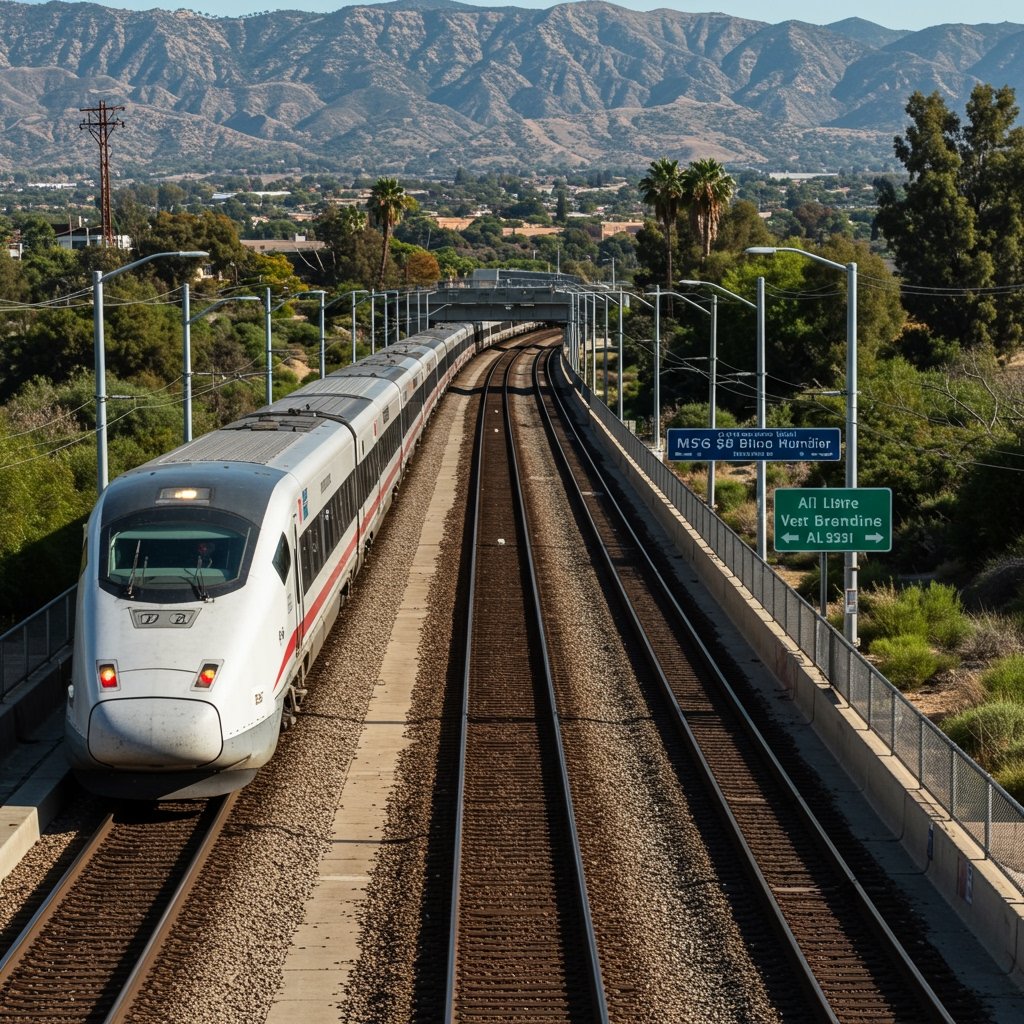Funding Imperative for Burbank-Palmdale Rail Link
The California High-Speed Rail Authority (CHSRA) is currently focused on a critical juncture for the future development of the ambitious statewide high-speed rail network, specifically concentrating efforts on securing the substantial funding required for the segment connecting Burbank to Palmdale. This vital link, stretching approximately 38 miles through challenging terrain including significant tunneling needs, represents a crucial step in connecting Southern California’s major population centers to the planned high-speed spine originating in the Central Valley. However, advancing this segment from planning to physical construction necessitates overcoming significant financial hurdles, estimated to require approximately $8 billion.
Securing this considerable sum involves a multi-pronged strategy, primarily centered on unlocking committed state funds and aggressively pursuing competitive federal grants. The complexity of this funding pursuit underscores the ongoing financial challenges that have characterized the high-speed rail project since its inception.
Navigating State Bond Funds and Legislative Scrutiny
A cornerstone of the CHSRA’s funding strategy for the Burbank-Palmdale segment is the accessing of remaining funds from Proposition 1A, the high-speed rail bond measure approved by California voters in 2008. Of the original $9.95 billion authorized by Prop 1A, approximately $4.2 billion remains unspent and subject to appropriation by the state legislature. The release of these funds is not automatic; it requires legislative action and has historically been a point of intense negotiation and debate.
State legislators have expressed concerns regarding the project’s escalating overall costs and revised timelines, leading to increased scrutiny over the allocation of remaining bond funds. Releasing the $4.2 billion is contingent upon the CHSRA demonstrating project readiness, financial prudence, and a clear path towards completing usable segments. The Authority is engaged in active discussions and advocacy with key legislative committees and individual members to build confidence and secure the necessary appropriations. These negotiations are critical; the state bond funds are not only a significant portion of the needed $8 billion but also serve as essential state match funding, a prerequisite for securing federal grants.
The Push for Federal Matching Grants
Beyond the state’s Proposition 1A funds, the CHSRA is heavily reliant on securing significant federal matching grants to bridge the remaining funding gap for the Burbank-Palmdale segment. With the passage of major federal infrastructure legislation, competitive grant programs have become a primary target for the Authority. These programs often prioritize projects that are shovel-ready, have committed local or state matching funds, and align with national transportation priorities.
Lobbying efforts in Washington D.C. are underway to position the Burbank-Palmdale segment favorably for these opportunities. Success in securing federal funding is directly tied to the ability to first unlock the state’s $4.2 billion in bond funds. Federal programs typically require a substantial local or state contribution, making the Proposition 1A funds indispensable leverage in grant applications. The pursuit of federal dollars adds another layer of complexity and uncertainty to the funding timeline, as federal grant cycles are competitive and outcomes are not guaranteed.
Broader Project Context: Costs, Timelines, and Oversight
The challenges faced in funding the Burbank-Palmdale segment are intrinsically linked to the broader history and current status of the California High-Speed Rail project. The project’s overall cost estimates have seen significant increases since the original projections made in 2008. The current estimate for completing the full statewide network is projected beyond $120 billion, a figure that has drawn considerable criticism and fueled public and legislative skepticism.
Furthermore, the project has experienced multiple revised timelines for completion of various segments, contributing to perceptions of delays and mismanagement. This history of escalating costs and schedule slippages has intensified oversight from state legislators and federal partners alike. Every funding request, including the $8 billion sought for the Burbank-Palmdale section, is now evaluated within this context of past performance and future uncertainty, making the financial and political landscape particularly difficult to navigate for the CHSRA.
The Strategic Importance of the Burbank-Palmdale Segment
Despite the funding challenges, the Burbank-Palmdale segment is considered strategically vital for the future operational viability of the California High-Speed Rail system. This segment is envisioned to connect the Antelope Valley (Palmdale), a crucial future junction point with potential connections to the north and east, to the San Fernando Valley (Burbank), providing a direct link into the Los Angeles metropolitan area. Completion of this section is seen as essential for creating a meaningful, operational segment in Southern California that can eventually integrate with the Central Valley line.
The CHSRA has set a potential construction start target for the Burbank-Palmdale segment for late 2025. However, this timeline is explicitly contingent upon the successful acquisition of the necessary $8 billion in funding, including the release of state Proposition 1A funds and the securing of federal grants. Without these crucial funding approvals, the late 2025 start date cannot be realized, further delaying progress on this critical piece of the network.
Outlook and Next Steps
The path forward for the Burbank-Palmdale high-speed rail segment remains dependent on the CHSRA’s ability to successfully navigate complex financial and political landscapes. Securing the $8 billion requires winning legislative approval for the release of the remaining $4.2 billion in Proposition 1A bond funds and successfully competing for substantial federal matching grants. The intensified scrutiny stemming from the project’s escalating overall project costs (projected beyond $120 billion) and history of revised timelines adds significant pressure to these efforts.
The targeted potential construction start in late 2025 serves as a near-term goal, but one that is entirely predicated on achieving these critical funding approvals in a timely manner. The outcome of the ongoing negotiations with state legislators and the results of upcoming federal grant application cycles will ultimately determine whether the Burbank-Palmdale segment can move forward as planned, or if it will face further delays, impacting the overall progress and viability of the California High-Speed Rail project.



















